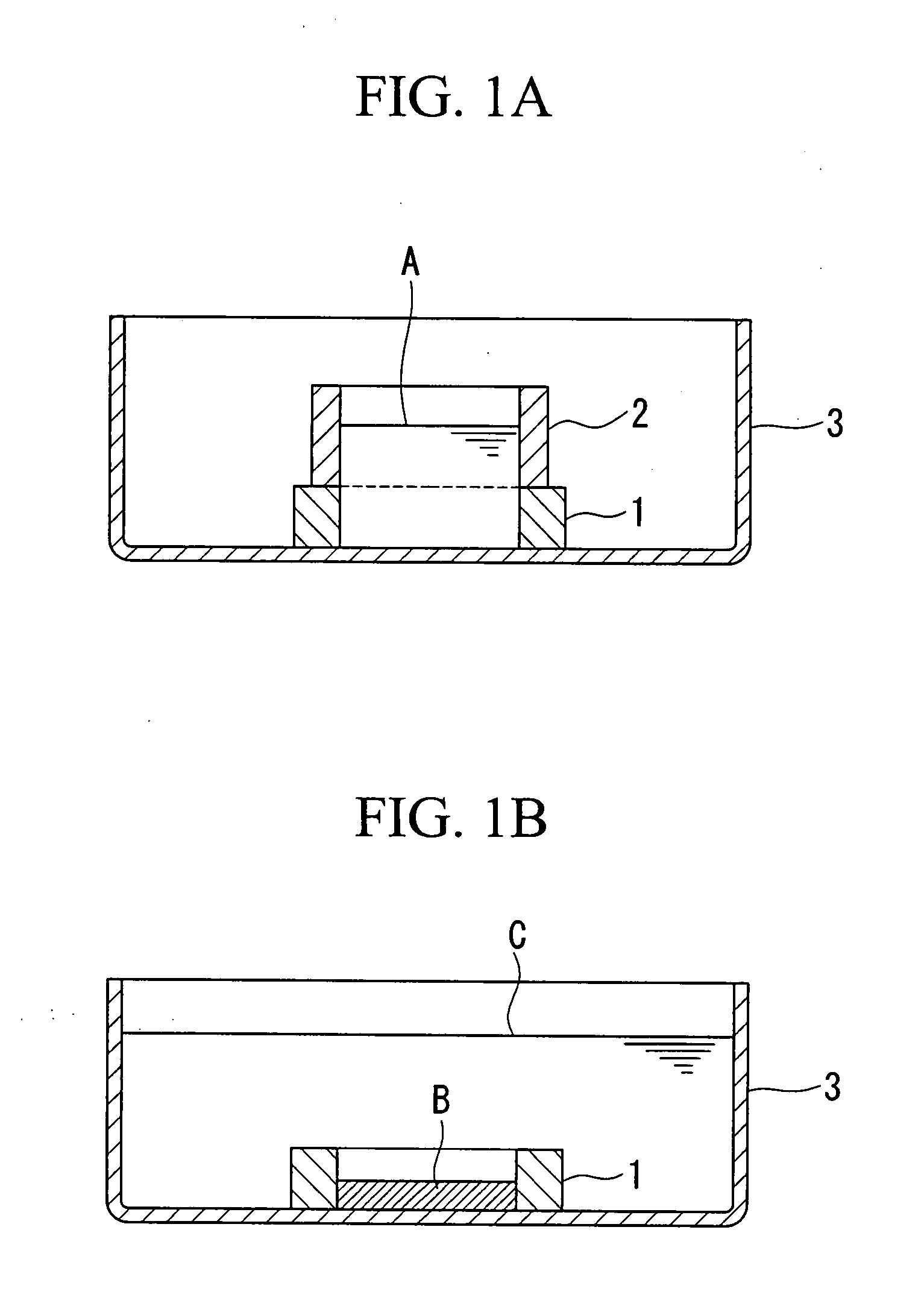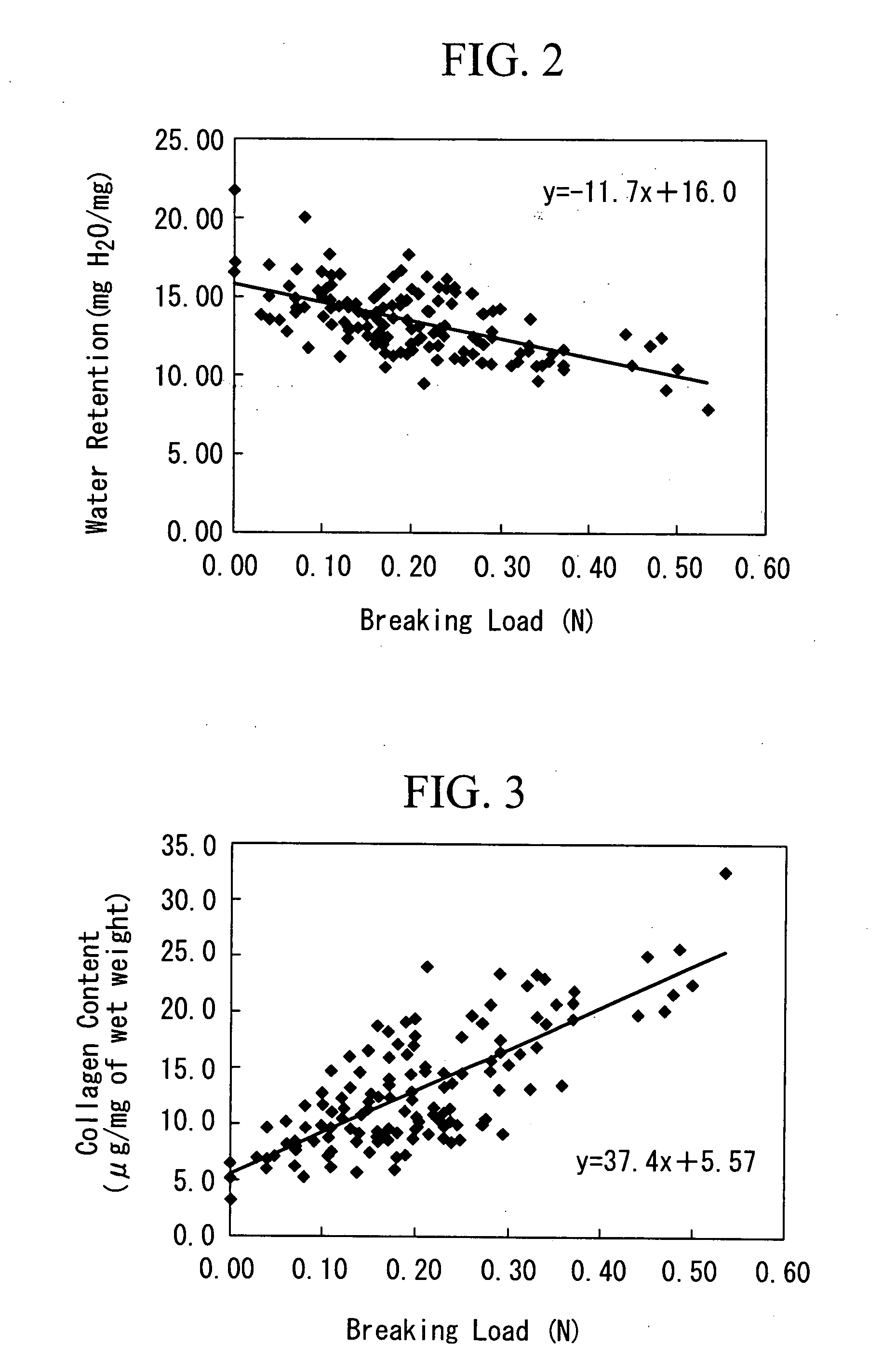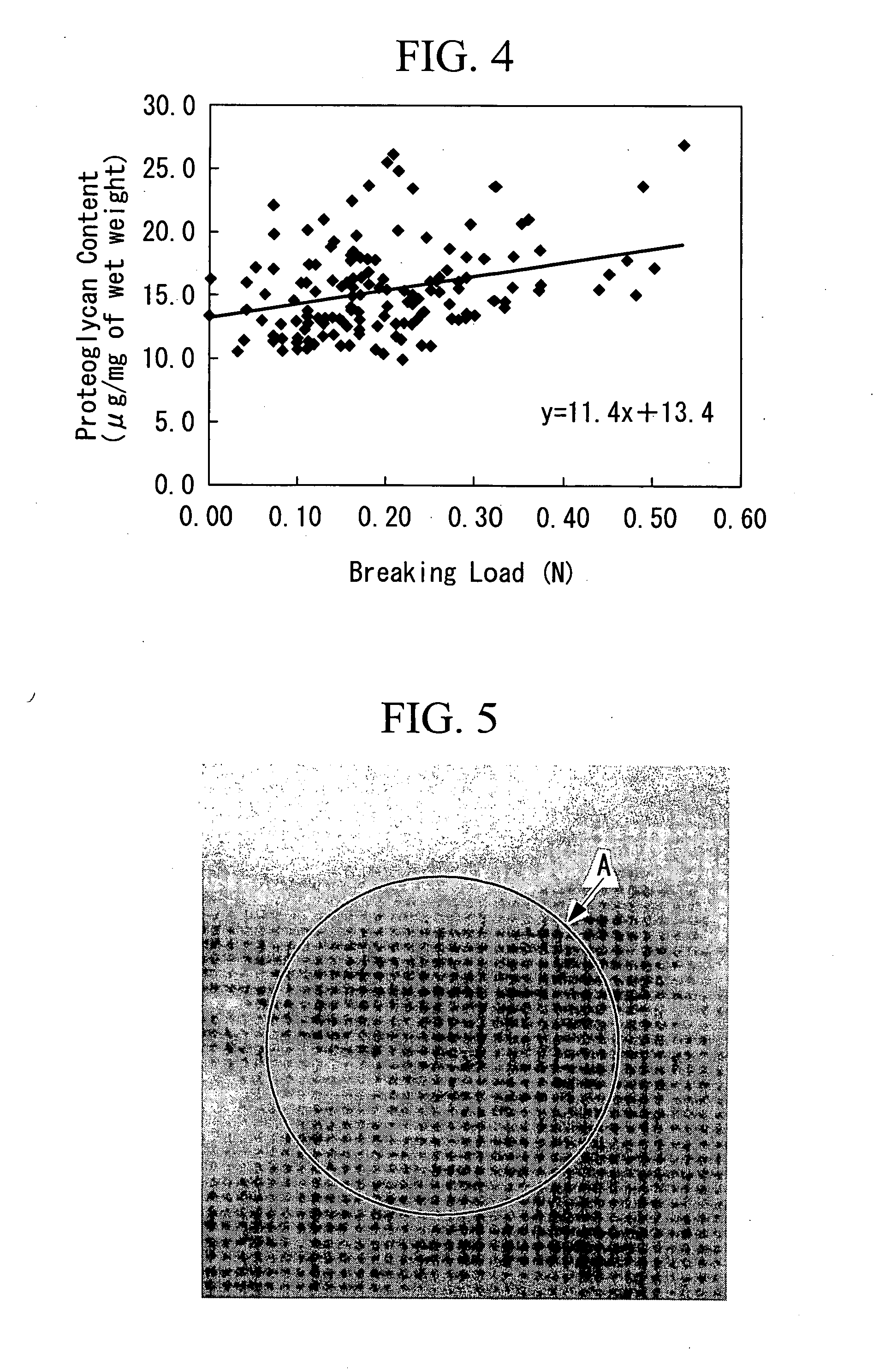Artificial cartilage tissue and production method thereof
a technology of cartilage and production method, which is applied in the field of artificial cartilage tissue, can solve the problems of poor self-regeneration ability, acute pain in the joint, and no way to regenerate cartilage, and achieves superior engraftablility, fixed mechanical strength, and high safety.
- Summary
- Abstract
- Description
- Claims
- Application Information
AI Technical Summary
Benefits of technology
Problems solved by technology
Method used
Image
Examples
example 1
Preparation of Artificial Cartilage Tissue Using Cells Derived from Porcine Articular Cartilage and its Mechanical and Biochemical Properties
1. Purpose
[0099] The purpose is to prepare an artificial cartilage tissue using cells derived from a porcine articular cartilage, to select the main constituents that reflect the mechanical strength, and to understand the contents of the main constituents having the suturable mechanical strength in the artificial cartilage tissue.
2. Cell Isolation
[0100] A hind-leg of an approximately one-year old LWD porcine was purchased from Shimoda Chikusan Limited. The knee joint was opened, and femur articular cartilage was aseptically collected. Hereinafter, according to a partially modified method of Mok S. S. et al. (J. Biol. Chem., 1994, 269, 33021-33027), cells derived from the articular cartilage (hereunder, referred to as chondrocytes) were isolated.
[0101] The collected cartilage was put in a DMEM / F-12 medium (medium containing Dulbecco's Mo...
example 2
[0115] Implantation of Artificial Cartilage Tissue Prepared by Using Cells Derived from Porcine Articular Cartilage into Pig Knee Joint
1. Purpose
[0116] The purpose is to discuss the safety of an artificial cartilage tissue prepared by using serum derived from a heterologous animal or an animal of the same species, and to understand the range of water retention and collagen content required for engraftment.
2. Artificial Cartilage Tissue
[0117] According to the method described in Example 1, six artificial cartilage tissues were prepared by using cells derived from porcine articular cartilage. However, two samples were prepared by using fetal bovine serum (FBS) instead of porcine serum. The diameter of the prepared artificial cartilage tissue was about 14 mm and the thickness thereof was about 1 mm. These samples were punched out in a disc-shape having a diameter of 8 mm, and the obtained samples were used for implantation. After the disc-shaped samples were punched out, the rema...
example 3
Transforming Growth Factor-β1 and Mechanical Strength
1. Purpose
[0123] The purpose is to ensure the effect of the transforming growth factor-β1 on the mechanical strength of an artificial cartilage tissue, and to discuss the concentration to be added into the medium.
2. Preparation of Artificial Cartilage Tissue
[0124] According to the method described in Example 1, artificial cartilage tissues were prepared using cells derived from porcine articular cartilage. In the preparation step using the silicon rings shown in FIG. 1A and FIG. 1B, media containing different concentrations of the transforming growth factor-β1 (TGF-β1) were used. The TGF-β1 concentration in the medium was 2.5, 5, 10, 20, and 40 ng / mL, each of which was referred to as the 2.5 ng / mL group, the 5 ng / mL group, the 10 ng / mL group, the 20 ng / mL group, and the 40 ng / mL group.
(3) Measurement of Tear Strength
[0125] According to the method described in Measurement Example 1 (1), the tear strength of the prepared p...
PUM
| Property | Measurement | Unit |
|---|---|---|
| dry weight | aaaaa | aaaaa |
| wet weight | aaaaa | aaaaa |
| wet weight | aaaaa | aaaaa |
Abstract
Description
Claims
Application Information
 Login to View More
Login to View More - R&D
- Intellectual Property
- Life Sciences
- Materials
- Tech Scout
- Unparalleled Data Quality
- Higher Quality Content
- 60% Fewer Hallucinations
Browse by: Latest US Patents, China's latest patents, Technical Efficacy Thesaurus, Application Domain, Technology Topic, Popular Technical Reports.
© 2025 PatSnap. All rights reserved.Legal|Privacy policy|Modern Slavery Act Transparency Statement|Sitemap|About US| Contact US: help@patsnap.com



